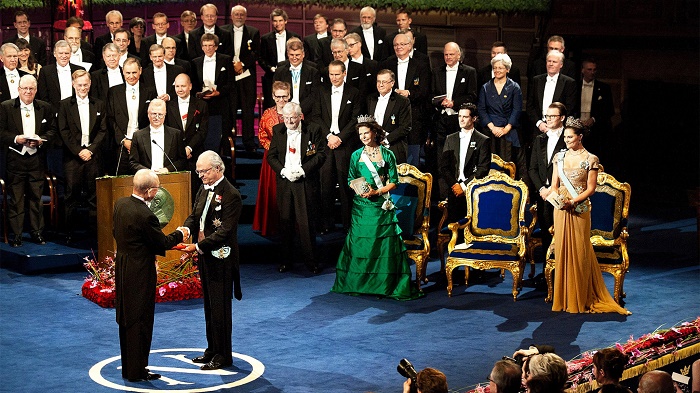IP&S, which sells data, bases its forecasts on the number of times a scientist’s work is cited by others in published papers.
Citations can reflect a study’s influence, but also serve as a way of measuring a scientist’s standing. And since Nobel nominations come from past winners and leading scientists, reputation counts.
Scientists selected as “Citation Laureates” rank in the top 1 percent of citations in their research areas.
“That is a signpost that the research wielded a lot of impact,” said Christopher King, an analyst with IP&S who helped select the winners.
Among the predicted winners for the Nobel Prize in Chemistry are Emmanuelle Charpentier of Helmholtz Centre for Infection Research in Germany and Jennifer Doudna of the University of California, Berkeley. They were picked for their development of the CRISPR-Cas9 method for genome editing.
The technique has taken biology by storm, igniting fierce patent battles between start-up companies and universities, and touching off ethical debates over its potential for editing human embryos.
Missing from the list is Feng Zhang, a researcher at the MIT-Harvard Broad Institute, who owns a broad U.S. patent on the technology, which is the subject of a legal battle. King said he was aware of Zhang’s claims on the technology, but noted that his scientific citations did not rise to the level of a nomination.
Other contenders for the chemistry prize, which will be awarded on Oct. 7 in Stockholm, include John Goodenough of the University of Texas Austin, and Stanley Whittingham of Binghamton University in New York for research leading to the development of the lithium-ion battery.
Also in contention is Carolyn Bertozzi of Stanford University for her contributions to “bioorthogonal chemistry,” which refers to chemical reactions in live cells and organisms. Bertozzi’s lab is using the process to develop smart probes for medical imaging.
For the Nobel in medicine, to be announced Oct. 5, Thomson Reuters picked Kazutoshi Mori of Kyoto University and Peter Walter of the University of California, San Francisco. They showed that a mechanism known as the unfolded protein response acts as a “quality control system” inside cells, deciding whether damaged cells live or die.
Other contenders include Jeffrey Gordon of Washington University in St. Louis for showing a relationship between diet and metabolism and microbes that live in the human gut.
The group also picked a trio of researchers – Alexander Rudensky of Memorial Sloan Kettering Cancer Centre, Dr. Shimon Sakaguchi of Osaka University, and Ethan Shevach of the National Institutes of Health – for discoveries relating to immune cells known as regulatory T cells and the function of Foxp3, a master regulator of these cells.
For the prizes in physics and economics, to be announced Oct. 6 and 12 respectively, Thomson Reuters predicts winners from scientists who helped pave the way for making X-ray lasers and work that helped explain the impact of policy decisions on labour markets and consumer demand.
More about:















































